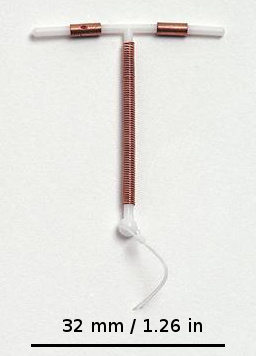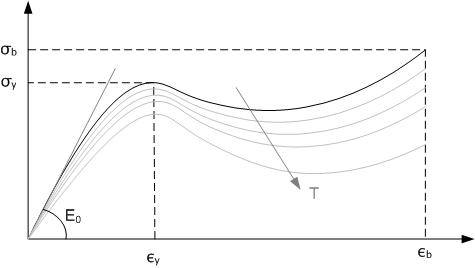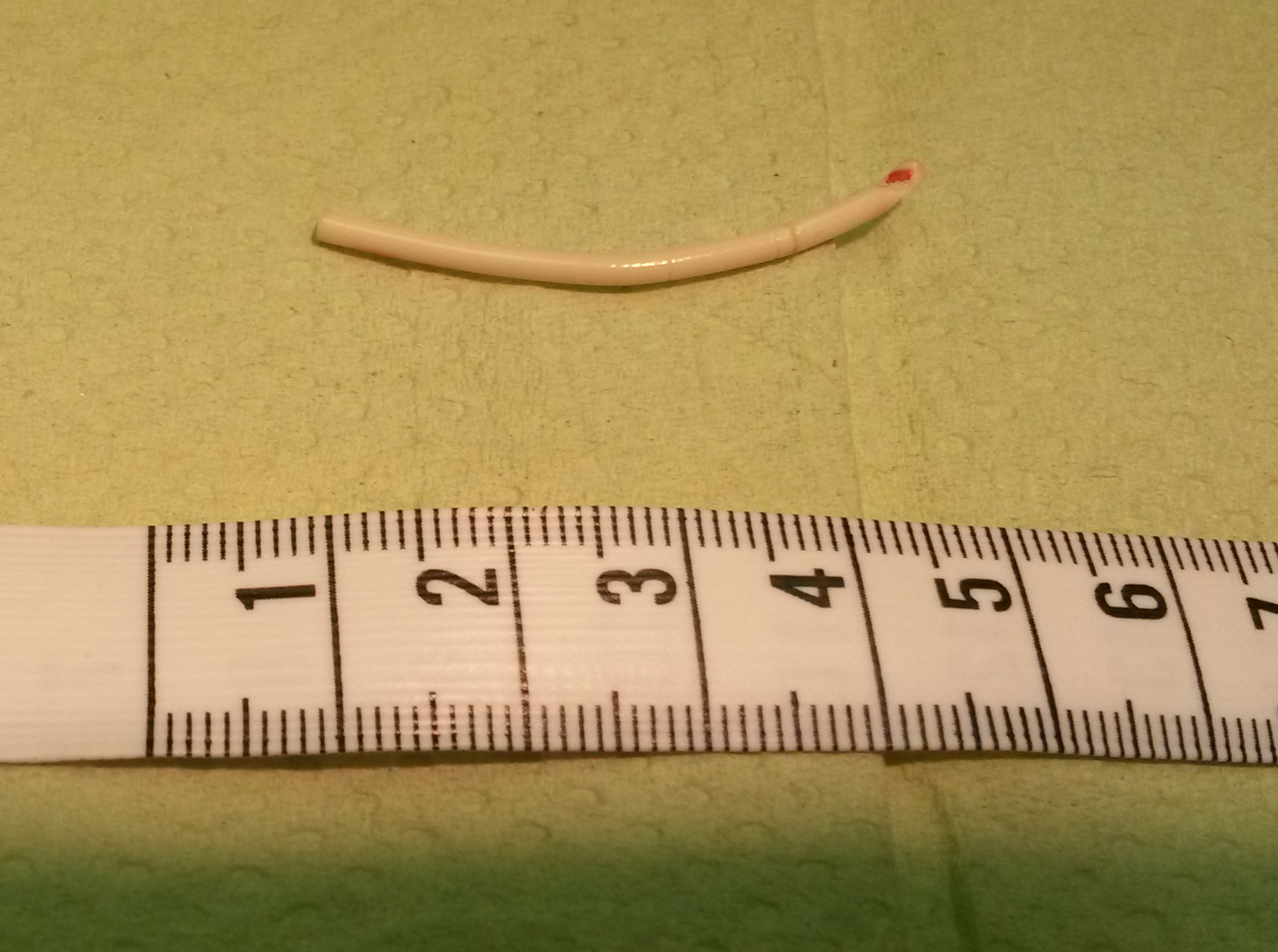|
Intrauterine Contraception
An intrauterine device (IUD), also known as an intrauterine contraceptive device (IUCD or ICD) or coil, is a small, often T-shaped birth control device that is inserted into the uterus to prevent pregnancy. IUDs are a form of long-acting reversible contraception (LARC). The use of IUDs as a form of birth control dates from the 1800s. A previous model known as the Dalkon shield was associated with an increased risk of pelvic inflammatory disease (PID). However, current models do not affect PID risk in women without sexually transmitted infections during the time of insertion. Although copper IUDs may increase menstrual bleeding and result in painful cramps, hormonal IUDs may reduce menstrual bleeding or stop menstruation altogether. However, women can have daily spotting for several months after insertion, and it can take up to three months for there to be a 90% decrease in bleeding with hormonal IUDs. Cramping can be treated with NSAIDs. More serious potential complications ... [...More Info...] [...Related Items...] OR: [Wikipedia] [Google] [Baidu] |
Copper IUD
A copper intrauterine device (IUD), also known as an intrauterine coil, copper coil, or non-hormonal IUD, is a form of long-acting reversible contraception and one of the most effective forms of birth control available. It can also be used for emergency contraception within five days of unprotected sex. The device is placed in the uterus and lasts up to twelve years, depending on the amount of copper present in the device. It may be used for contraception regardless of age or previous pregnancy, and may be placed immediately after a vaginal delivery, cesarean delivery, or surgical abortion. Following its removal, fertility quickly returns. Common side effects include Heavy menstrual bleeding, heavy menstrual periods and increased Dysmenorrhea, menstrual cramps (dysmenorrhea). Rarely, the device may come out or perforate the uterine wall. The copper IUD was initially developed in Germany in the early 1900s, but came into widespread medical use in the 1970s. It is on the WHO Model ... [...More Info...] [...Related Items...] OR: [Wikipedia] [Google] [Baidu] |
Levonorgestrel
Levonorgestrel is a hormonal medication used in a number of birth control methods. It is combined with an estrogen to make combination birth control pills. As an emergency birth control, sold under the brand names Plan B One-Step and Julie, among others, it is useful within 72 hours of unprotected sex. The more time that has passed since sex, the less effective the medication becomes. Levonorgestrel works by preventing or delaying ovulation so an egg cannot be released. The dosage used for emergency contraception is ineffective when ovulation has already occurred, and has been found to have no effect on implantation. It decreases the chances of pregnancy by 57–93%. In an intrauterine device (IUD), such as Mirena among others, it is effective for the long-term prevention of pregnancy. A levonorgestrel-releasing implant is also available in some countries. Common side effects include nausea, breast tenderness, headaches, and increased, decreased, or irregular menstru ... [...More Info...] [...Related Items...] OR: [Wikipedia] [Google] [Baidu] |
Howard Tatum
Howard J. Tatum (1915 – 2002) was an American obstetrician. Along with Chilean physician Jaime Zipper, he invented the copper intrauterine device (IUD). The Tatum-T intrauterine device was the first T-shaped copper-bearing IUD to be sold in the United States, and his T-shaped design served as the foundation for other intrauterine devices. Early life and education Howard J. Tatum was born in Philadelphia, Pennsylvania in 1915. Tatum earned a Bachelor of Arts in chemistry in 1936 and a Ph.D. in pharmacology and toxicology in 1941. In 1945, he earned a Doctor of Medicine, and in 1949 a degree in obstetrics and gynecology. Career After completing his studies, Tatum was a professor of medicine in several American Universities. In 1966, Tatum became the associate director and senior scientist at the Center of Biomedical Research at the Population Council in New York City. Tatum was a founding member of the Association of Planned Parenthood Physicians, and served as its board ... [...More Info...] [...Related Items...] OR: [Wikipedia] [Google] [Baidu] |
Cervix
The cervix (: cervices) or cervix uteri is a dynamic fibromuscular sexual organ of the female reproductive system that connects the vagina with the uterine cavity. The human female cervix has been documented anatomically since at least the time of Hippocrates, over 2,000 years ago. The cervix is approximately 4 cm long with a diameter of approximately 3 cm and tends to be described as a cylindrical shape, although the front and back walls of the cervix are contiguous. The size of the cervix changes throughout a woman's life cycle. For example, women in the fertile years of their reproductive cycle tend to have larger cervixes than postmenopausal women; likewise, women who have produced offspring have a larger cervix than those who have not. In relation to the vagina, the part of the cervix that opens to the uterus is called the ''internal os'' and the opening of the cervix in the vagina is called the ''external os''. Between them is a conduit commonly called the cervic ... [...More Info...] [...Related Items...] OR: [Wikipedia] [Google] [Baidu] |
Lazar C
Lazar may refer to: * Lazar (name), any of various persons with this name * Lazar BVT, Serbian armoured personnel carriers * Lazar 2, Serbian multi-role armoured personnel carrier * Lazar 3, Serbian multi-role armoured personnel carrier * Lazăr, a tributary of the river Jiul de Vest in Hunedoara County, Romania See also *Lazar house, former term for leper colony *Knights of St Lazarus *Lazarus (other) *Lăzărești (other) *Lazard (other) *Laser (other) *Lazer (other) Lazer may refer to: * Lazer, Hautes-Alpes, a commune in southeastern France * Panther Lazer, a car * Lazer 103, former branding of American radio station WLZR-FM * Lazer 99.3, the branding of American radio station WLZX-FM People with the name ... * Lazare (other) * LazarBeam (born 1994), Australian YouTuber {{disambig ... [...More Info...] [...Related Items...] OR: [Wikipedia] [Google] [Baidu] |
Thermoplastic
A thermoplastic, or thermosoftening plastic, is any plastic polymer material that becomes pliable or moldable at a certain elevated temperature and solidifies upon cooling. Most thermoplastics have a high molecular weight. The polymer chains associate by intermolecular forces, which weaken rapidly with increased temperature, yielding a viscous liquid. In this state, thermoplastics may be reshaped, and are typically used to produce parts by various polymer processing techniques such as injection molding, compression molding, calendering, and extrusion. Thermoplastics differ from thermosetting polymers (or "thermosets"), which form irreversible chemical bonds during the curing process. Thermosets do not melt when heated, but typically decompose and do not reform upon cooling. Above its glass transition temperature and below its melting point, the physical properties of a thermoplastic change drastically without an associated phase change. Some thermoplastics do not fully ... [...More Info...] [...Related Items...] OR: [Wikipedia] [Google] [Baidu] |
Tenrei Ōta
Tenrei Ōta ( Japanese: ''Ōta Tenrei''), born Takeo Ōta (太田 武夫 ''Ōta Takeo'', 1900–1985) was a Japanese obstetrician-gynaecologist and politician. He invented the Ōta ring, an early intrauterine device (IUD). Throughout his life, he was an outspoken advocate for contraception, abortion, and euthanasia. Some of his beliefs were rooted in eugenics, and during his time as a member of Japan's House of Representatives, he drafted and co-sponsored the Eugenic Protection Law. Early life and education Takeo Ōta was born in 1900 to a physician's family in the Migochi village of the Kyoto Prefecture in Japan. In 1925, he earned his doctorate from Kyushu University. He then specialised in gynaecology at Kyoto University. He studied human cancer cells to obtain his Ph.D. from Kyoto University, but was denied his degree in 1934 due to his "leftist inclinations". After Japan was defeated in World War II, he was awarded the degree. Career Ōta began studying contraceptiv ... [...More Info...] [...Related Items...] OR: [Wikipedia] [Google] [Baidu] |
Gräfenberg's Ring
Gräfenberg's ring is a flexible ring of silk suture, later versions of which were wrapped in silver wire. It was an early IUD, a birth control device. Gräfenberg's ring was the first IUD used by a significant number of women. The ring was introduced by German gynecologist Ernst Gräfenberg in 1929. It ceased to be in wide use circa 1939. Inserting a foreign device into the uterus causes an inflammatory response, which creates a hostile environment for sperm. The silver wire used to construct later versions of Gräfenberg's ring was contaminated with copper, which increases this spermicidal effect. In 1934, Japanese physician Tenrei Ōta developed a variation of the Gräfenberg ring that contained a supportive structure in the center. The addition of this central disc lowered the IUD's expulsion rate. However, insertion of these devices caused high rates of infection and were condemned by the medical community. Furthermore, their use and development was stifled by World Wa ... [...More Info...] [...Related Items...] OR: [Wikipedia] [Google] [Baidu] |
G-spot
The G-spot, also called the Gräfenberg spot (for German gynecologist Ernst Gräfenberg), is characterized as an erogenous area of the vagina that, when stimulated, may lead to strong sexual arousal, powerful orgasms and potential female ejaculation.Sepage 135 for prostate information, anpage 76 for G-spot and vaginal nerve ending information. It is typically reported to be located up the front (anterior) vaginal wall between the vaginal opening and the urethra and is a sensitive area that may be part of the female prostate. The existence of the G-spot has not been proven, nor has the source of female ejaculation. Although the G-spot has been studied since the 1940s, disagreement persists over its existence as a distinct structure, definition and location. * The G-spot may be an extension of the clitoris, which together may be the cause of orgasms experienced vaginally. * Sexologists and other researchers are concerned that women may consider themselves to be dysfunctional ... [...More Info...] [...Related Items...] OR: [Wikipedia] [Google] [Baidu] |
Ernst Gräfenberg
Ernst Gräfenberg (26 September 1881 – 28 October 1957) was a German-born physician and scientist. He developed the intrauterine device (IUD), and studied the role of the woman's urethra in orgasm. The G-spot is named after him. Career Gräfenberg studied medicine in Göttingen and Munich, earning his doctorate on 10 March 1905. He began working as a doctor of ophthalmology at the university of Würzburg, but then moved to the Department of Obstetrics and Gynaecology at the University of Kiel, where he published papers on cancer metastasis (the "Gräfenberg theory"), and the physiology of egg implantation. In 1910 Gräfenberg worked as a gynaecologist in Berlin, and by 1920 was quite successful, with an office on the Kurfürstendamm. He was chief gynaecologist of a municipal hospital in Britz, a working-class Berlin district, and was beginning scientific studies of the physiology of human reproduction at Berlin University. During the World War I, First World War, he was a medi ... [...More Info...] [...Related Items...] OR: [Wikipedia] [Google] [Baidu] |
Contraceptive Implant
A contraceptive implant is an implantable medical device used for the purpose of birth control. The implant may depend on the timed release of hormones to hinder ovulation or sperm development, the ability of copper to act as a natural spermicide within the uterus, or it may work using a non-hormonal, physical blocking mechanism. As with other contraceptives, a contraceptive implant is designed to prevent pregnancy, but it does not protect against sexually transmitted infections. Women Implant The contraceptive implant is hormone-based and highly effective, approved in more than 60 countries and used by millions of women around the world. The typical implant is a small flexible tube measuring about in length. It is most commonly inserted subdermally in the inner portion of the upper, non-dominant arm by a trained and certified health care provider. After insertion, it prevents pregnancy by releasing progestin which inhibits ovulation. The two most common versions are the singl ... [...More Info...] [...Related Items...] OR: [Wikipedia] [Google] [Baidu] |






